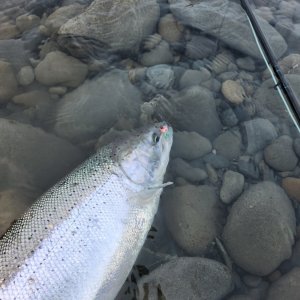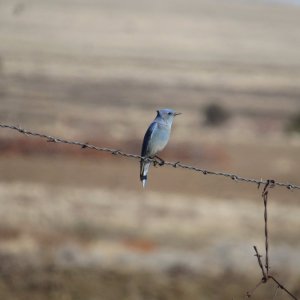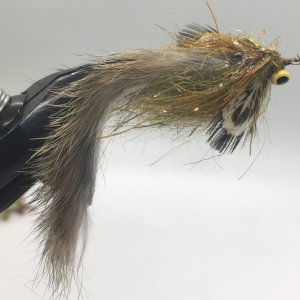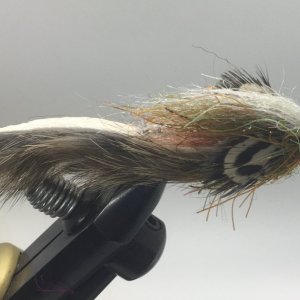Navigation
Install the app
How to install the app on iOS
Follow along with the video below to see how to install our site as a web app on your home screen.
Note: This feature may not be available in some browsers.
More options
Style variation
You are using an out of date browser. It may not display this or other websites correctly.
You should upgrade or use an alternative browser.
You should upgrade or use an alternative browser.
2023 Skagit/Sauk season is a go
- Thread starter GOTY
- Start date
It's been that way for as long as I've known it - 32 years.The take out at Native still leaves a bit to be desired.
Nice Z-pulley setup there. Did you learn that in crevasse rescue training?Last I was out there was January last year. From gov't bridge to Native the river had jumped to run along the highway where the flats used to be. Not sure when that happened. The take out at Native still leaves a bit to be desired.
View attachment 46605
Smalma,Salmo g-
My memory is that having the season extending into April was a high priority for the recreational anglers. The strategy of weekly season has been used to extend the season into April with an end date of the 15th when the forecast will not support a 7 day week season. I assume that with the current forecast and the information from past creel surveys WDFW determined that 5 days a week season would be best to accomplish that goal.
Although I haven't seen all of WDFW's data for this, I'm pretty sure that a runsize of 5,000 can support a 7-day/week CNR season through April 30 without exceeding the ESA take limit. That's why I raised the point. I'm thinking the reason for the 5-day/week season is for the same reason the Stilly is closed to sport fishing most of the summer, which has zero to do with fish conservation. WDFW does not go to bat for recreational fishing whenever a treaty tribe expresses "concern."
Dave,OK I I misunderstood the NMFS policy, agreement but the fact remains there are not many fish returning and that is my overall point.
Are 5000 fish even close to capacity for the Sauk and Skagit systems combined? Shouldn't that be the driving escapement goals?
Dave
The carrying capacity is the fish population that a watershed will produce absent any influence from fish harvest. We have enough data for the Skagit from 1978 onward to the present time to understand that returns of wild adult Skagit steelhead has not been negatively affected by harvest, whether that harvest was from regulated recreational angling or from treaty tribal gillnet fishing. We also have 10 years with no fishing activity at all. The upshot is that so long as the Skagit/Sauk wild steelhead escapement is 3,500 - 4,000 spawners or more, the basin is well enough seeded with fry to produce the maximum number of steelhead the environment, including the marine ocean environment, is presently capable of producing. Adult returns have ranged from a low of around 3,000 to a high of 16,000 wild steelhead. It is well worth noting that the years of highest escapement did NOT result in higher returns 4 or 5 years later. The highest escapement (nearly 16,000) resulted in a return much lower in number. The Skagit steelhead management plan includes the most rigorous analysis I have ever seen of a salmon or steelhead population. Having a CNR season when the runsize is 4,000 or larger is the last thing that will negatively affect the wild steelhead population. If we want consistently larger runs of steelhead to the Skagit or other river systems, then we need to be able to cause higher ocean survival rates than these fish presently experience. And most of that factor is far beyond our ability to influence or control.
Thanks. I learned it at that same spot about 15 years ago.Nice Z-pulley setup there. Did you learn that in crevasse rescue training?
Salmo g -
A couple comments about the 5 day per week season. I have no doubt the WDFW and the tribes have been in talks about how to structure their seasons.
I seem to remember that recently we had a 4-day a week season which barely lasted through the planted season (planned to end Apri15?). Yes there was lots of effort (in part due to water conditions). Don't think it was unreasonable to think that a 5-day a week season would allow for access to the allowable impacts - erring on the side of the resource?
The original Skagit/Sauk season was designed to last through the April 30. That date was selected as a very conservative date after which 85/90% of the wild steelhead spawning was completed. In the last couple decades, the spring run-off has ended earlier and the wild steelhead spawning curve has shifted earlier (climate change impacts?).
curt
A couple comments about the 5 day per week season. I have no doubt the WDFW and the tribes have been in talks about how to structure their seasons.
I seem to remember that recently we had a 4-day a week season which barely lasted through the planted season (planned to end Apri15?). Yes there was lots of effort (in part due to water conditions). Don't think it was unreasonable to think that a 5-day a week season would allow for access to the allowable impacts - erring on the side of the resource?
The original Skagit/Sauk season was designed to last through the April 30. That date was selected as a very conservative date after which 85/90% of the wild steelhead spawning was completed. In the last couple decades, the spring run-off has ended earlier and the wild steelhead spawning curve has shifted earlier (climate change impacts?).
curt
wetline dave
Steelhead
Salmo g,
Thanks for filling in some holes I either forgot or neglected to put together..
Dave
Thanks for filling in some holes I either forgot or neglected to put together..
Dave
wetlineDave-
Some background info on Skagit/Sauk steelhead that might provide some insight into the potential steelhead capacity and how can change.
In NMFS Puget Sound steelhead recovery plan, it was estimated (Hard et al) that the historical abundance of wild steelhead in the Skagit basin was 51,000 steelhead with 5,500 returning to the Baker sub-basin, 14,100 to the Sauk sub-basin and the remain to the rest of the Skagit.
By the 1977/78 season the Baker portion of the historical steelhead abundance was functionally extinct thanks to the Baker dams and the associated problems of getting adults and especially the juveniles/smolts around the dams. For the first 4 years of the earliest run size information, we have 1977/78 to 1980/81 the average wild steelhead run was estimated to have averaged 5,829 or roughly 11% of the historically abundance. Why
Why? The Various Skagit dams, a wide range of other man-inducted environmental damage, and overfishing. In the mid-1970s the prevailing thought in steelhead management was that a fish was a fish (wild and hatchery fish were the same), that recreational fishing could not over fish the population, and finally only1 steelhead redd/mile of steelhead habitat was all that was needed to seed the available steelhead habitat. That thinking began changing in the late 1970s.
By the early 1980s it was acknowledged that hatchery and wild steelhead were different, escapement goals in wild steelhead were being established in the Puget Sound region and mass marking of the hatchery smolts was accomplished allowing selective fishing as a management tool. In the Skagit basin the wild steelhead respond to those changes in a positive way. For the 4-year period 1986/87 to 1989/90 wild run size averaged 13,154. While many of the managers were celebrating that success those escapements were the high point. In spite of the continuation or even more conservative management the wild run sizes fell - ranging from 4,000 to 9,000 from 1990 to 2005. A clear indication of declining steelhead productivity. In my opinion that decline was driven by declining marine survival of the smolts after they left the river and the continued simplification of the mainstem habitat between the upper Skagit Dams and the mouth of the Sauk driven by an altered hydrograph.
In October of 2003 the Sauk and lower Skagit suffered an additional insult. A 200-year storm dropped over an estimated 20 inches of rain over Glacier Peak in a 24-hour period. Without the normal snow covering 10s of millions of cubic yards of sediment of the mountain. The massive wave of sediment buried much of the available steelhead habitat downstream of Glacier Peak. Egg and juvenile survival crashed, and the wild returns fell reaching a low point in 2009 when only an estimated 2,500 wild steelhead returned. Luckily the transport of the sediment slowed, and the steelhead returns climbed reaching 9,000 in 2014. By chance 2014 was the last year that early timed hatchery steelhead smolts was ended.
Since 2009 the wild steelhead abundance declined again stabilizing in the 4,000 to 6,000 range the last few years. Yes, eliminating that 10% fishing impacts would result in a slight increase in abundance the next generation but that increase would be a one-time gain; at least until the non-fishing factors that are limiting the steelhead population are addressed or improved. Approximately 70% of the independent steelhead populations for more than a decade have had no directed fishing or hatchery releases yet with the exception of the Samish none have enjoyed any significant population increases.
Hope the above helps with understanding the complexity carrying capacity and additional questions occur I do my best to answer.
Curt
Some background info on Skagit/Sauk steelhead that might provide some insight into the potential steelhead capacity and how can change.
In NMFS Puget Sound steelhead recovery plan, it was estimated (Hard et al) that the historical abundance of wild steelhead in the Skagit basin was 51,000 steelhead with 5,500 returning to the Baker sub-basin, 14,100 to the Sauk sub-basin and the remain to the rest of the Skagit.
By the 1977/78 season the Baker portion of the historical steelhead abundance was functionally extinct thanks to the Baker dams and the associated problems of getting adults and especially the juveniles/smolts around the dams. For the first 4 years of the earliest run size information, we have 1977/78 to 1980/81 the average wild steelhead run was estimated to have averaged 5,829 or roughly 11% of the historically abundance. Why
Why? The Various Skagit dams, a wide range of other man-inducted environmental damage, and overfishing. In the mid-1970s the prevailing thought in steelhead management was that a fish was a fish (wild and hatchery fish were the same), that recreational fishing could not over fish the population, and finally only1 steelhead redd/mile of steelhead habitat was all that was needed to seed the available steelhead habitat. That thinking began changing in the late 1970s.
By the early 1980s it was acknowledged that hatchery and wild steelhead were different, escapement goals in wild steelhead were being established in the Puget Sound region and mass marking of the hatchery smolts was accomplished allowing selective fishing as a management tool. In the Skagit basin the wild steelhead respond to those changes in a positive way. For the 4-year period 1986/87 to 1989/90 wild run size averaged 13,154. While many of the managers were celebrating that success those escapements were the high point. In spite of the continuation or even more conservative management the wild run sizes fell - ranging from 4,000 to 9,000 from 1990 to 2005. A clear indication of declining steelhead productivity. In my opinion that decline was driven by declining marine survival of the smolts after they left the river and the continued simplification of the mainstem habitat between the upper Skagit Dams and the mouth of the Sauk driven by an altered hydrograph.
In October of 2003 the Sauk and lower Skagit suffered an additional insult. A 200-year storm dropped over an estimated 20 inches of rain over Glacier Peak in a 24-hour period. Without the normal snow covering 10s of millions of cubic yards of sediment of the mountain. The massive wave of sediment buried much of the available steelhead habitat downstream of Glacier Peak. Egg and juvenile survival crashed, and the wild returns fell reaching a low point in 2009 when only an estimated 2,500 wild steelhead returned. Luckily the transport of the sediment slowed, and the steelhead returns climbed reaching 9,000 in 2014. By chance 2014 was the last year that early timed hatchery steelhead smolts was ended.
Since 2009 the wild steelhead abundance declined again stabilizing in the 4,000 to 6,000 range the last few years. Yes, eliminating that 10% fishing impacts would result in a slight increase in abundance the next generation but that increase would be a one-time gain; at least until the non-fishing factors that are limiting the steelhead population are addressed or improved. Approximately 70% of the independent steelhead populations for more than a decade have had no directed fishing or hatchery releases yet with the exception of the Samish none have enjoyed any significant population increases.
Hope the above helps with understanding the complexity carrying capacity and additional questions occur I do my best to answer.
Curt
wetline dave
Steelhead
Curt,
Thank-you lor the added details.
So here is a question regarding mortality of juveniles out migration.
How much of a factor is the loss of kelp and eel grass along the shore line?
Dave
Thank-you lor the added details.
So here is a question regarding mortality of juveniles out migration.
How much of a factor is the loss of kelp and eel grass along the shore line?
Dave
Dave -
The loss of kelp and eel grass beds impacts on the survival of a wide array of juvenile fish and other critters. But that loss has minimal impact on the survival of steelhead smolts. Once the juvenile steelhead become "smolts" they migrate quickly to the ocean. Those smolts spend little time in the estuary (a few hours?) and migrate quickly through the sound. Wild steelhead smolts that travel down the North Fork Skagit typically migrate through Deception Pass and out into the straits reaching west of Port Angeles area in 6 or so days. The smolts using the South Fork typically migrate southward going around the south end of Whidbey Island before heading out to the straits taking about 10 days to reach the same point as those taking the northern route.
In the steelhead smolts' travels in Puget Sound, they tend to migrate over deep water a but suspended at shallow level and unlike sea-run cutthroat or bull trout spend little time in the shoreline shallows.
Curt
The loss of kelp and eel grass beds impacts on the survival of a wide array of juvenile fish and other critters. But that loss has minimal impact on the survival of steelhead smolts. Once the juvenile steelhead become "smolts" they migrate quickly to the ocean. Those smolts spend little time in the estuary (a few hours?) and migrate quickly through the sound. Wild steelhead smolts that travel down the North Fork Skagit typically migrate through Deception Pass and out into the straits reaching west of Port Angeles area in 6 or so days. The smolts using the South Fork typically migrate southward going around the south end of Whidbey Island before heading out to the straits taking about 10 days to reach the same point as those taking the northern route.
In the steelhead smolts' travels in Puget Sound, they tend to migrate over deep water a but suspended at shallow level and unlike sea-run cutthroat or bull trout spend little time in the shoreline shallows.
Curt
First, happy holidays to everyone and I am really thankful there apparently will be a Skagit Steelhead season this year. However, I am extremely disappointed in WDFW’s lack of transparency regarding the specifics of the fishery. I was recently a salmon biologist on the Skagit River for nearly 30 years and I know of no data to support the contention that Nookachamps Creek steelhead will be adversely effected by the recreational fishery from as far away as thirty miles .Not a scarcity of date, no data. Given the increased pressure on the Skagit due to restrictions on other Puget Sound rivers and the banning of fishing from a boat on the Peninsula, WDFW should be trying to spread the effort over the largest area feasible due to the high density of fishers in a restricted area. I can only think of two reasons for this restriction. The first is a lack of adequate funding to monitor this additional area. If true, this seems like a legitimate reason and WDFW should say so. The second reason could be that WDFW wants to minimize interactions between recreational fishers and the Upper Skagit Tribe which fishes in this area. If this is the reason, WDFW should say this as well. The current justification strains WDFW credibility and only acts to reduce confidence in WDFW, at least in my mind. In this day and age where it seems ever government decision is challenged or suspect, the Department really should tell it like it is to build public confidence. Or they should open the river from some point not too distant upstream from Nookachamps Creek to the Dalles
wetline dave
Steelhead
Smalma and Salmo-g, You both supplied alot of the answers I have been curious about.
I didn't know how to word my posts to get the response I desired so I came through the back door so to speak. Sometimes being mildly controversial and remaining open minded will get one to the finish line so to speak.
Thank-You both and WW too who added a nice bit.
Both of your input clarified some issues that have been rattling around for awhile.
There is way too much political influence in wild life management and especially regarding steelhead and salmon.
Dave
I didn't know how to word my posts to get the response I desired so I came through the back door so to speak. Sometimes being mildly controversial and remaining open minded will get one to the finish line so to speak.
Thank-You both and WW too who added a nice bit.
Both of your input clarified some issues that have been rattling around for awhile.
There is way too much political influence in wild life management and especially regarding steelhead and salmon.
Dave
JayB
Steelhead
Seems like stealth is the preferred mode for planning when it comes to planning these days, but since I don't think I've fished with anyone on this board other than a guided trip with Nick, that's not really an option so I'm going to announce that I'll be camping in the area from March 21 PM through March 24 AM and plan to float the river from March 22-24. I'm going to try to arrange for another block of days in April but that's TBD.
If other folks are interested in joining me in March, I'll bring my 14' frame raft and will have two open seats and would love to have company. I've never fished the Skagit before so having at least one person along with some experience would be great, but certainly not a prerequisite. My only ask would be to either help set the shuttle or split the shuttle-fee if there's a shuttle service operating up there. Shoot me a PM if you're interested in coming along for one or more days and I'll pencil you in.
If other folks are interested in joining me in March, I'll bring my 14' frame raft and will have two open seats and would love to have company. I've never fished the Skagit before so having at least one person along with some experience would be great, but certainly not a prerequisite. My only ask would be to either help set the shuttle or split the shuttle-fee if there's a shuttle service operating up there. Shoot me a PM if you're interested in coming along for one or more days and I'll pencil you in.
I'm interested! Let me check the dates.. i have Sundays and Mondays off, but can take a few days off.. maybe.. going to Kentucky in February for 9 or 10 days for the bourbon trail and to visit friends! I can even row a bit if you want!! Cheers!Seems like stealth is the preferred mode for planning when it comes to planning these days, but since I don't think I've fished with anyone on this board other than a guided trip with Nick, that's not really an option so I'm going to announce that I'll be camping in the area from March 21 PM through March 24 AM and plan to float the river from March 22-24. I'm going to try to arrange for another block of days in April but that's TBD.
If other folks are interested in joining me in March, I'll bring my 14' frame raft and will have two open seats and would love to have company. I've never fished the Skagit before so having at least one person along with some experience would be great, but certainly not a prerequisite. My only ask would be to either help set the shuttle or split the shuttle-fee if there's a shuttle service operating up there. Shoot me a PM if you're interested in coming along for one or more days and I'll pencil you in.
Dude...it's open right now.I am currently standing on my rock awaiting the opener.

GOTY
Steelhead
Hotspotter!!!!!Dude...it's open right now.
Mossback
Fear My Powerful Emojis 😆
Well I am going to go up to the truck and grab my gear and make a few casts then...Dude...it's open right now.
I hope nobody steals my spot....gonna grab my rain jacket too, sort of wet.
Hey get off of my lawn.. err I mean rock!! That's my napping rock and spey casting from a seated position rock!!Well I am going to go up to the truck and grab my gear and make a few casts then...
I hope nobody steals my spot.













